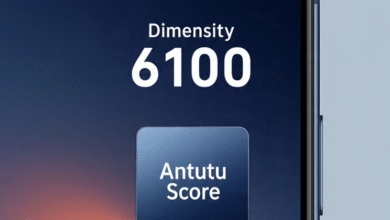Unlocking the Concept of Cilfqtacmitd: A Deep Dive into Innovation and Strategy

Introduction to Cilfqtacmitd
cilfqtacmitd When you first come across the term , it may feel unfamiliar or even abstract. Yet, within this keyword lies a dynamic concept that has the potential to reshape how we think about problem-solving, innovation, and long-term growth. is not just a word—it symbolizes a set of practices and approaches that encourage creativity, adaptability, and strategic management in a world that changes faster than ever before.
At its core, cilfqtacmitd can be interpreted as a framework for improving efficiency while maintaining flexibility. It bridges the gap between rigid systems and free-flowing creativity, allowing organizations and individuals to navigate uncertainty with confidence. In today’s digital-first landscape, the ability to combine structure with innovation is more important than ever, and provides a roadmap for doing just that.
Understanding also means recognizing its role in both personal and professional development. From businesses looking to streamline operations to individuals aiming to refine their daily habits, the philosophy behind this concept offers valuable lessons for anyone striving toward growth.
The Origins and Meaning Behind Cilfqtacmitd

While the term itself may appear modern and unique, the roots of cilfqtacmitd are embedded in timeless principles of innovation and adaptability. Think of it as an evolving mindset rather than a fixed definition. Its origins stem from the need to respond to constant challenges—economic shifts, technological revolutions, and cultural transformations—that demand agility without sacrificing stability.
Cilfqtacmitd combines several elements: clarity, integration, leadership, flexibility, quality, and time management. When broken down, these components represent the building blocks of success in almost any field. The philosophy behind it is that progress comes from uniting different strengths into one cohesive strategy rather than focusing on a single isolated skill.
Another way to view is as a bridge between tradition and innovation. On one hand, it acknowledges tried-and-tested practices like discipline and structure. On the other, it embraces experimentation, risk-taking, and out-of-the-box thinking. This balance creates a foundation that is both stable and adaptive—a rare combination that helps people and organizations thrive in uncertain environments.
Why Cilfqtacmitd Matters in Today’s World
The modern era is characterized by rapid changes. Technology evolves overnight, industries face disruption, and consumer expectations shift constantly. In such a landscape, relying solely on traditional strategies often leaves organizations behind. This is where cilfqtacmitd becomes a game-changer.
One of its most important benefits is resilience. Businesses and individuals who adopt the mindset of cilfqtacmitd are better prepared to bounce back from setbacks. Rather than being paralyzed by challenges, they view obstacles as opportunities to test new strategies and refine existing ones. This proactive approach reduces stress while increasing long-term success.
Another reason cilfqtacmitd matters is its emphasis on integration. Too often, companies operate in silos, with departments working independently rather than collaboratively. encourages a holistic view, where communication and shared goals lead to more sustainable outcomes. It’s a shift from “me versus you” to “us together,” which is exactly what today’s interconnected world requires.
Finally, cilfqtacmitd aligns perfectly with the growing demand for innovation. Whether you’re a small business owner, a creative professional, or part of a large corporation, embracing allows you to innovate systematically rather than chaotically. This structured creativity not only sparks fresh ideas but also ensures they can be executed effectively.
Practical Applications of Cilfqtacmitd
While the theory behind cilfqtacmitd is fascinating, its real value lies in practical applications. It’s not just a buzzword—it’s a system you can implement in your daily work and personal life.
For businesses, cilfqtacmitd can streamline project management. By combining clarity and adaptability, teams can set clear goals while leaving room for adjustments as challenges arise. This prevents wasted effort while encouraging innovation. For instance, instead of rigid deadlines that cause burnout, encourages flexible milestones that prioritize quality without sacrificing speed.
In personal development, cilfqtacmitd can be applied to time management and productivity. Many people struggle with balancing priorities in their daily lives. By applying the principles of—such as integrating flexibility with discipline—you can create routines that are both effective and sustainable. Rather than overwhelming yourself with a strict schedule, you build a rhythm that adapts to unexpected changes without derailing your progress.
Even in education, cilfqtacmitd proves valuable. Students and educators can use it to create learning environments that foster creativity while maintaining focus. This means balancing structured lessons with opportunities for open exploration, encouraging learners to think critically rather than just memorize information.
Challenges in Adopting Cilfqtacmitd
Of course, embracing cilfqtacmitd doesn’t come without challenges. Like any new system or mindset, it requires a shift in perspective that not everyone is ready for. One of the biggest hurdles is resistance to change. People and organizations often cling to familiar methods, even when they’re no longer effective. Overcoming this requires patience and consistent effort.
Another challenge lies in balance. Since cilfqtacmitd promotes both structure and flexibility, some individuals may lean too heavily toward one side. Too much structure can limit creativity, while too much flexibility can lead to chaos. The real challenge is finding the middle ground where both coexist harmoniously.
Finally, there’s the issue of measuring success. Traditional metrics often focus solely on output or profit, while cilfqtacmitd emphasizes holistic growth. This means companies need to develop new ways of evaluating progress, such as measuring innovation levels, team collaboration, or adaptability in crisis situations. Transitioning to these new metrics can take time and effort.
Strategies for Implementing Cilfqtacmitd
To successfully adopt cilfqtacmitd, a clear strategy is essential. One effective approach is to start small. Begin by applying its principles in one area of your life or business, such as project management or daily routines. Once you see positive results, expand its application to other areas.
Another strategy is fostering collaboration. Since cilfqtacmitd thrives on integration, creating an environment where people feel comfortable sharing ideas is critical. Encourage open communication, celebrate diversity of thought, and build systems that value input from every team member.
Lastly, embrace continuous learning. Cilfqtacmitd isn’t static—it evolves as challenges change. Staying committed to learning ensures that you remain adaptable in the face of uncertainty. Whether through workshops, reading, or personal reflection, continuous improvement is the fuel that keeps alive.
The Future of Cilfqtacmitd
Looking ahead, cilfqtacmitd is likely to become even more relevant. As artificial intelligence, automation, and global interconnectivity reshape the way we live and work, the need for balance between innovation and structure will only grow. provides the foundation for navigating this future with confidence.
Organizations that adopt cilfqtacmitd early will gain a competitive advantage. They’ll be better equipped to adapt to technological disruptions, respond to global crises, and attract top talent who value creativity and growth. On a personal level, individuals who practice will enjoy more resilience, productivity, and fulfillment in their lives.
Ultimately, cilfqtacmitd is more than a strategy—it’s a mindset. It encourages us to embrace change rather than fear it, to combine creativity with discipline, and to view challenges as opportunities for growth. That’s a philosophy that will never go out of style.
Conclusion
Cilfqtacmitd may start as a mysterious term, but its meaning becomes clear once you understand its principles. It’s about blending structure with adaptability, tradition with innovation, and individual strengths with collective goals. By adopting cilfqtacmitd in business, education, and personal life, we can build systems that not only survive uncertainty but thrive in it.
The journey toward mastering cilfqtacmitd isn’t always easy—it requires patience, experimentation, and a willingness to let go of old habits. But for those who embrace it fully, the rewards are undeniable: stronger resilience, greater creativity, and a future defined by sustainable growth.



